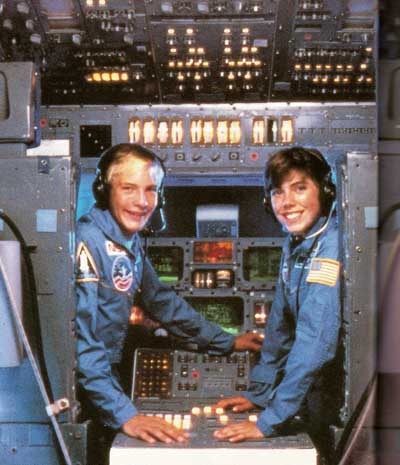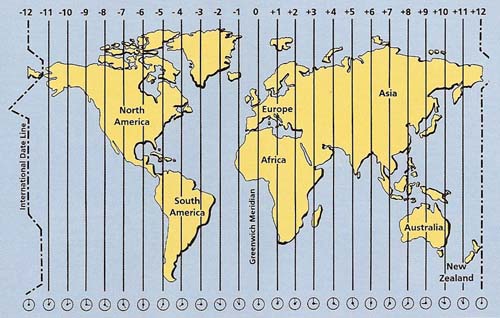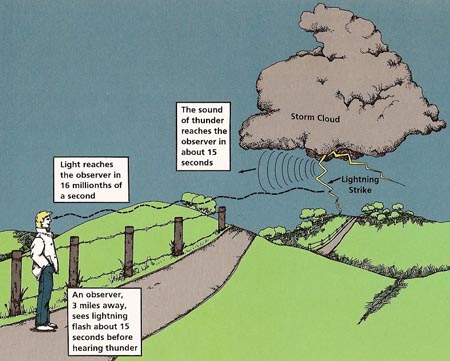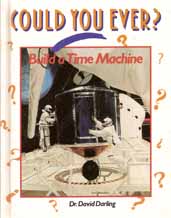COULD YOU EVER BUILD A TIME MACHINE? 1. About Time

Figure 1. People have developed many ways to travel through space, but not through time. Here, U.S. Space Academy students take their turn as commander and pilot inside the cockpit of a space shuttle mockup at the U.S. Space Camp Training in Huntsville, Alabama.

Figure 2. Since the middle of the nineteenth century, cameras have allowed events to be captured on film. Through photographs, we can see how things really were at a particular place and time.

Figure 3. Time zones around the world.

Figure 4. Everything we see and hear is from the past. In the case of a thunderstorm, the flash from a lightning strike reaches us about a million times faster than the sound of the thunder.

Figure 5. Built thousands of years ago, the pyramids of Giza in Egypt rise from the desert by the Nile River.
Try a simple experiment. Make sure first that you are wearing a watch. Now, walk forward and backward, to the right and to the left. Walk faster, or run, in any direction you like. Jump up and down. Move however you wish, for as long as you wish. Check the time on your watch against a clock that has remained at rest, both before and after your period of exercise. What do you notice?
The results of this experiment are clear. They show that while you have freedom to move around in space, you have no control at all over your motion through time. Despite all your efforts, your watch will not appear to have gained or lost any time as compared with the clock that did not move.
Yet, the more you think about it, the stranger that seems. After all, people today can quickly cover huge distances in jet aircraft. They can explore both on and below the Earth's surface. Astronauts have even traveled as far away as the Moon. We can move about in space almost as we please. Yet no ne has ever managed to jump even one second forward into the future or back into the past.
We are all forced, it seems, to move through time at the same rate and in the same direction. It is as if we were passengers together on a train. All we can see is the ever-changing scenery of the present moment through the side windows. The view through the driver's window at what is to come, and through the back window from the caboose at what has already gone by, is blocked from us. Or is it?
People have not always had a strong interest in the past or the future. Long ago, they did not need to keep an exact record of the changing seasons. But when men and women began to settle and depend heavily on farming, they needed to form a calendar. If the crops were not sown and harvested at the right time of year, there would not be enough food for people to eat. This was especially important in ancient Egypt where life revolved around the annual flooding of the river Nile (see Figure 5).
The Egyptians noticed that the Nile floods came at about the same time each year. They always started around the day when the bright star Sirius appeared on the horizon just before sunrise. As a result, this day was taken to mark the start of the Egyptian year. The year was then split up into 12 months of 30 days. Five extra days were added at the end to make 365 in all. Using this scheme, the Egyptian calendar kept reasonably in step with the seasons.
But the time it takes the Earth to go once around the Sun is not exactly 365 days. It is really about 365 and a quarter days. Every four years, the, the Egyptian calendar fell one day behind in relation to the seasons. Under the Roman emperor Julius Caesar, adjustments were made to the Egyptian calendar to allow for a "leap year." This was a year with one extra day (February 29) every four years. Caesar also shortened and lengthened some of the months. His successor, Augustus, made more changes. (The months July and August are named in honor of these two important figures.) Finally, in 1582, Pope Gregory XIII announced some slight corrections that created the Gregorian calendar we still use today.
Gone But Not Forgotten
The human brain has an astonishing ability to recall scenes and sounds in great detail, even if they happened many years ago. Because of this, we can relive the past in our minds. We can even recreate parts of the past that other people may have missed by writing about them or drawing pictures from memory.
This talent for remembering and passing on knowledge is one of the reasons human beings have been able to make such remarkable progress. Throughout human history, people have made many great discoveries, inventions, and works of art. The past has been preserved through books, paintings, sculptures, and music.
But more recently, humans have developed other, more accurate ways of bringing the past back to life. Since the middle of the nineteenth century, cameras have allowed events to be captured on film (Figure 2). Through photographs, we can see how things really were at a particular place and time.
Movie cameras have given us even more power to recreate the past. Since their invention around the start of the last century, they have recorded many of the world's greatest events. Today, from World War I battles to astronauts on the Moon, these can be viewed over and over again. People who had not even been born at the time can see glimpses of the world from more than 50 years ago.
Not only sights, but also sounds can now be replayed with complete accuracy. Following the invention of the phonograph in 1877, our ability to record and replay sounds has developed at a rapid pace. Today, with hand-held TV sound cameras and video recorders, we can capture, in precise detail, sounds and moving pictures from the everyday world. For example, people now routinely record the birth of their children or family Christmas celebrations on DVD. Then, years later, the disk can be shown on a television set or computer. In a sense, the TV screen becomes a window in the past.
Times Around the World
As schools break for lunch in Los Angeles, children in New York are already heading home for the day. The United States (including Hawaii and Alaska) space several time zones, with an hour between each zone. There is a three-hour difference between states on the west and east coasts.
For most purposes, times around the world are set according to Greenwich Mean Time, or GMT (see Figure 3). Greenwich is a place near London through which the line of zero degrees longitude passes. Lines of longitude are imaginary lines drawn over the Earth's surface between the north and south poles. These are 360 degrees of longitude – 180 to the west of Greenwich and 180 to the east.
To the west of Greenwich, local time is behind Greenwich time. To the east, it is ahead. The time changes by one hour for every 15 degrees of longitude. For example, New York City, which is about 75 degrees west of Greenwich, is five hours behind GMT.
The only difficulty with this system occurs on the opposite side of the world from Greenwich. On the line of longitude that is both 180 degrees to the west of Greenwich and 180 degrees to the east, there has to be a sudden jump from one day to the next. This line is known as the International Date Line. It passes more or less down the middle of the Pacific Ocean. A ship sailing east from Japan to the United States has to move its clocks back by a full 24 hours when it crosses the International Date Line. Going the other way, clocks have to be moved forward by one whole day.
The Past All Around
When we look at photographs, listen to recorded music, or watch homemade family videos, we are experiencing things that happened some time ago. On the other hand, when we look around us, we must be seeing the world as it really is, now. But are we?
The sounds you are hearing at this moment come from a thousandth of second in the past for every foot they traveled to reach your ears. You do not hear them instantly because sound moves through air at about 1,000 feet per second. During a thunderstorm, for instance, the rumble from a lightning flash three miles away will not reach you for 15 seconds (see Figure 4).
What is true of sound is also true of light. But light travels a million times faster than sound, or 186,282 miles per second. This is such an enormous speed that the light from everyday objects reaches us almost immediately. But as we look at things that are farther and farther away, it takes longer and longer for the light from them to travel to our eyes.
Light from the Sun, for example, takes slightly more than eight minutes to arrive at the Earth. Light from the brightest star in the night sky, Sirius, requires more than eight years to make the journey across a distance of about 25 trillion miles. This means that we are seeing Sirius not as it is now, but as it was more than eight years ago! In the case of most stars in the night sky, their light has taken hundreds or even thousands of years to reach our eyes.
The fact is, we see nothing as it really is. Everything you look at, even your on hand or the writing on this page, is as it was in the past. What is more, the farther away you look, the farther back in time you see. Here on Earth this effect is so tiny that we are never aware of it. But for astronomers studying the Universe, the effect is very important, indeed. By gazing into space through giant telescopes, astronomers can look far back in time. If they look at the most distant objects yet discovered, they can see the Universe as it was about 15 billion years ago, not long after it formed.
With the help of modern inventions, the, we can store sounds and pictures of events, and later replay them. By gazing more deeply into space, we can look farther and farther back into time. This means that devices such as cameras, video recorders, and telescopes are all "time machines" of a sort. And yet, they are useless for actually traveling into the past or for giving us any side of what the future might be like.
To explore the past in person, or to see into the future, would be much more interesting. But it might also lead to unusual and quite baffling problems.

